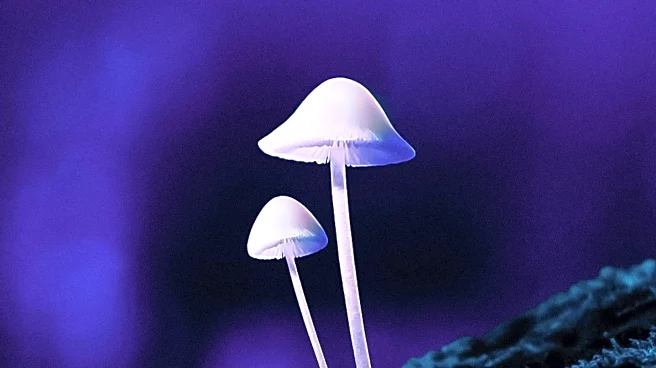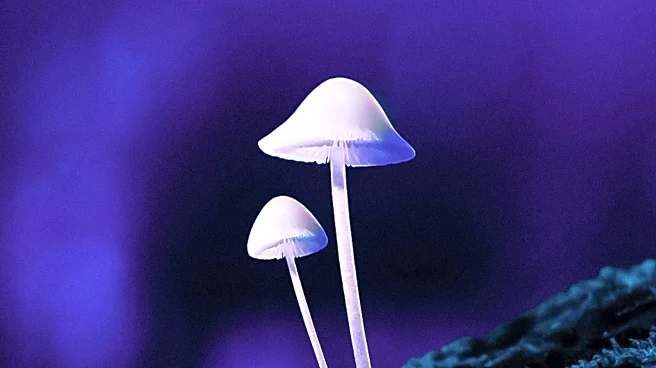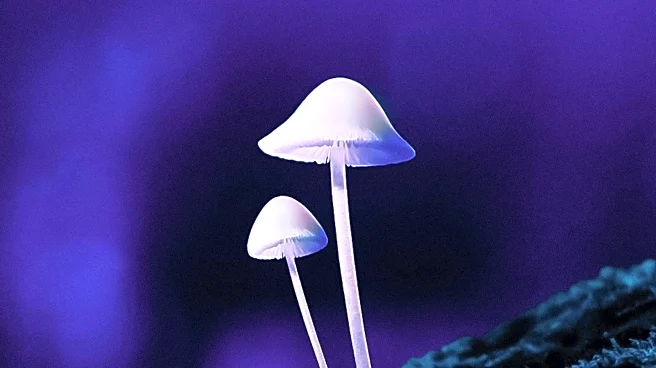What's Happening?
Researchers have uncovered that certain mushrooms have evolved to produce psilocybin, a psychoactive compound, through two distinct enzymatic pathways. This discovery, led by Dirk Hoffmeister from Friedrich Schiller University Jena, highlights a case of convergent evolution where unrelated species develop similar traits independently. The study found that Inocybe corydalina and Psilocybe mushrooms, despite their different ecological roles, both produce psilocybin using different enzymes. This finding not only enhances the understanding of fungal biology but also opens new avenues for sustainable psilocybin production, which is crucial for its potential medical applications.
Why It's Important?
The discovery of dual pathways for psilocybin production is significant as it could lead to more efficient and environmentally friendly methods of producing this compound, which has shown promise in treating mental health conditions like depression and anxiety. Current synthetic methods for psilocybin production are not sustainable, often generating hazardous waste. By leveraging natural enzymatic processes, researchers can potentially scale up production for clinical trials and medical use, reducing environmental impact and production costs. This advancement could accelerate the integration of psilocybin into therapeutic practices, benefiting patients and healthcare providers.










